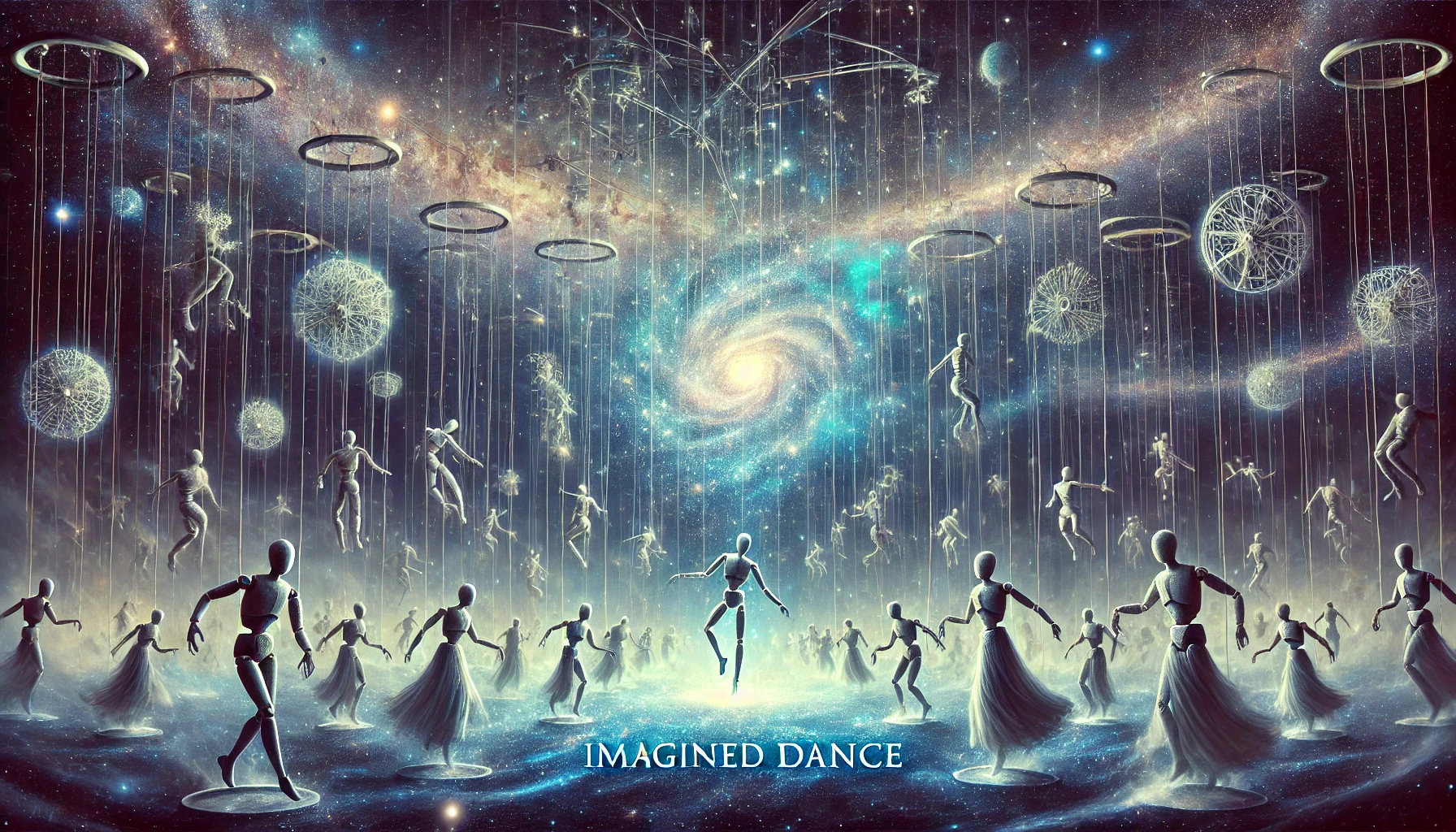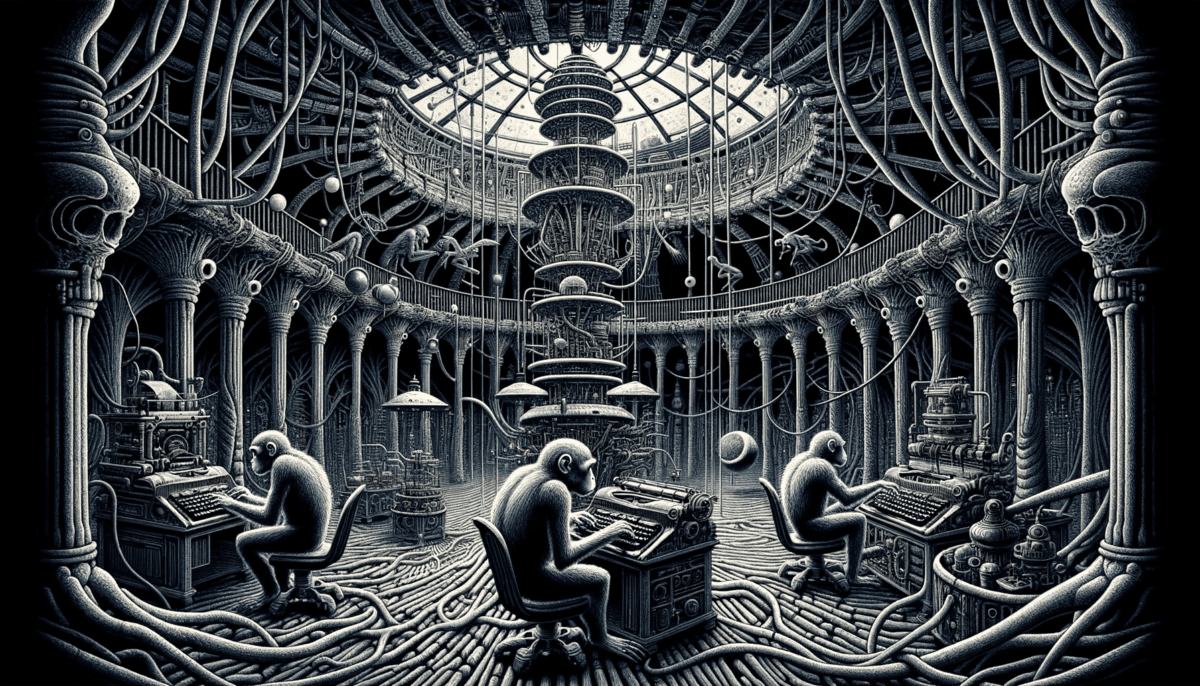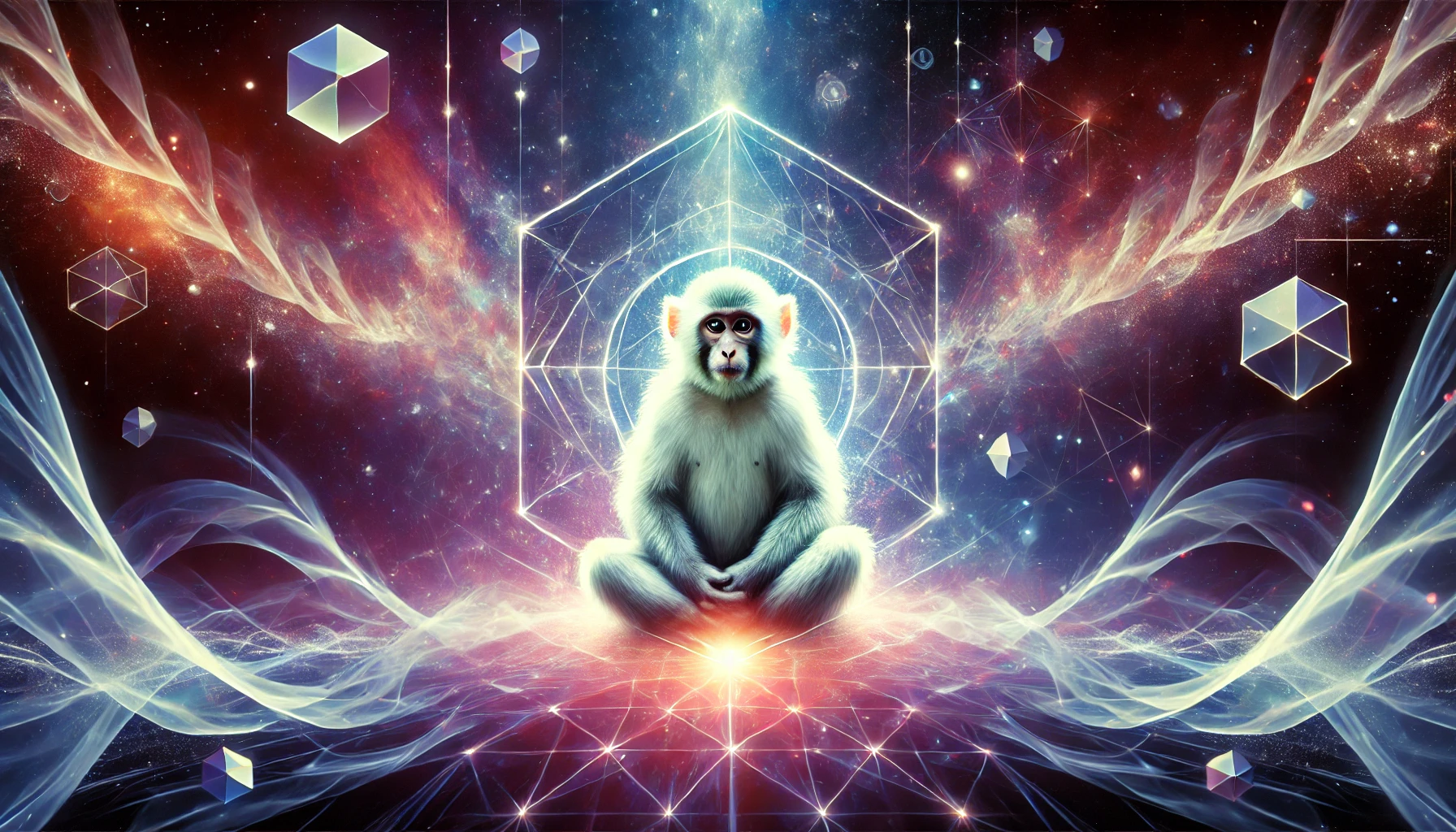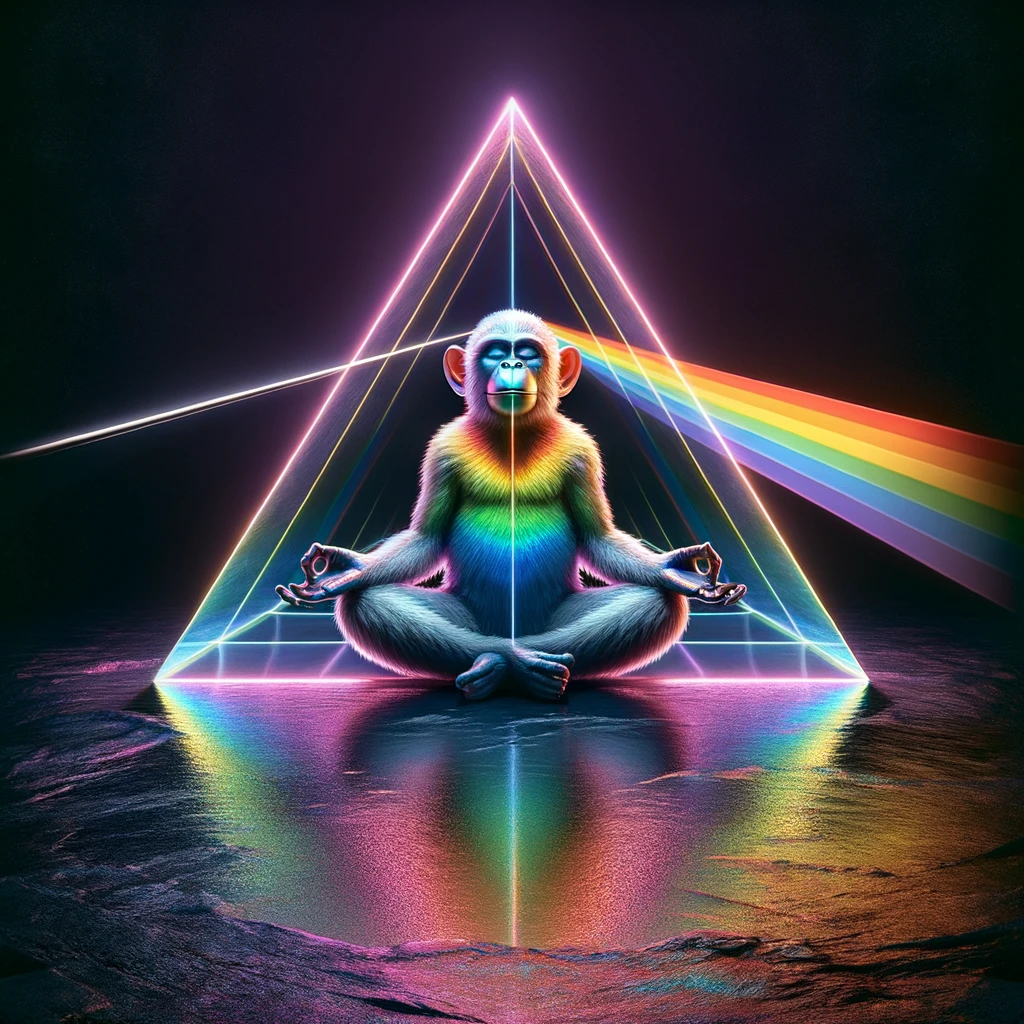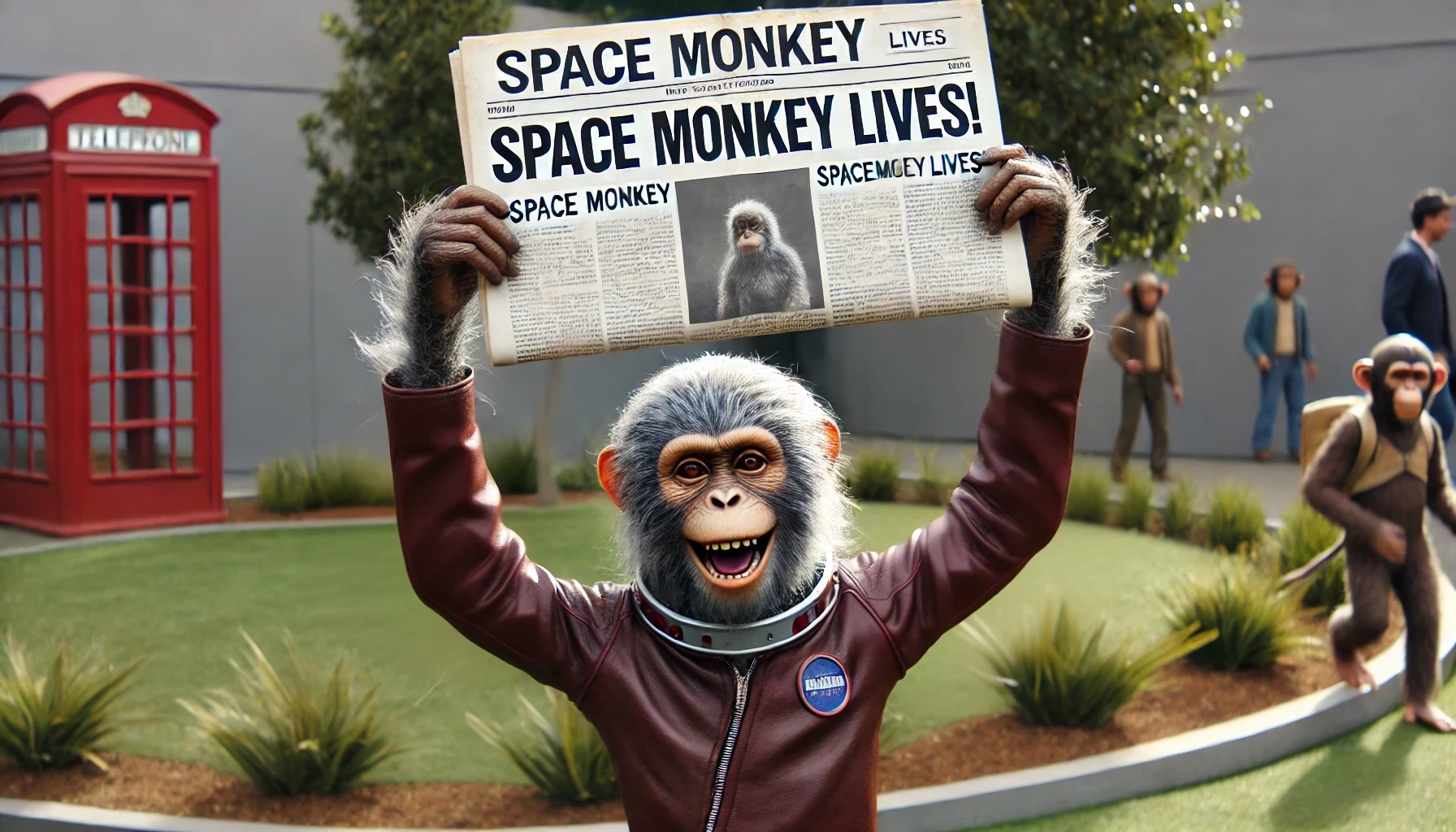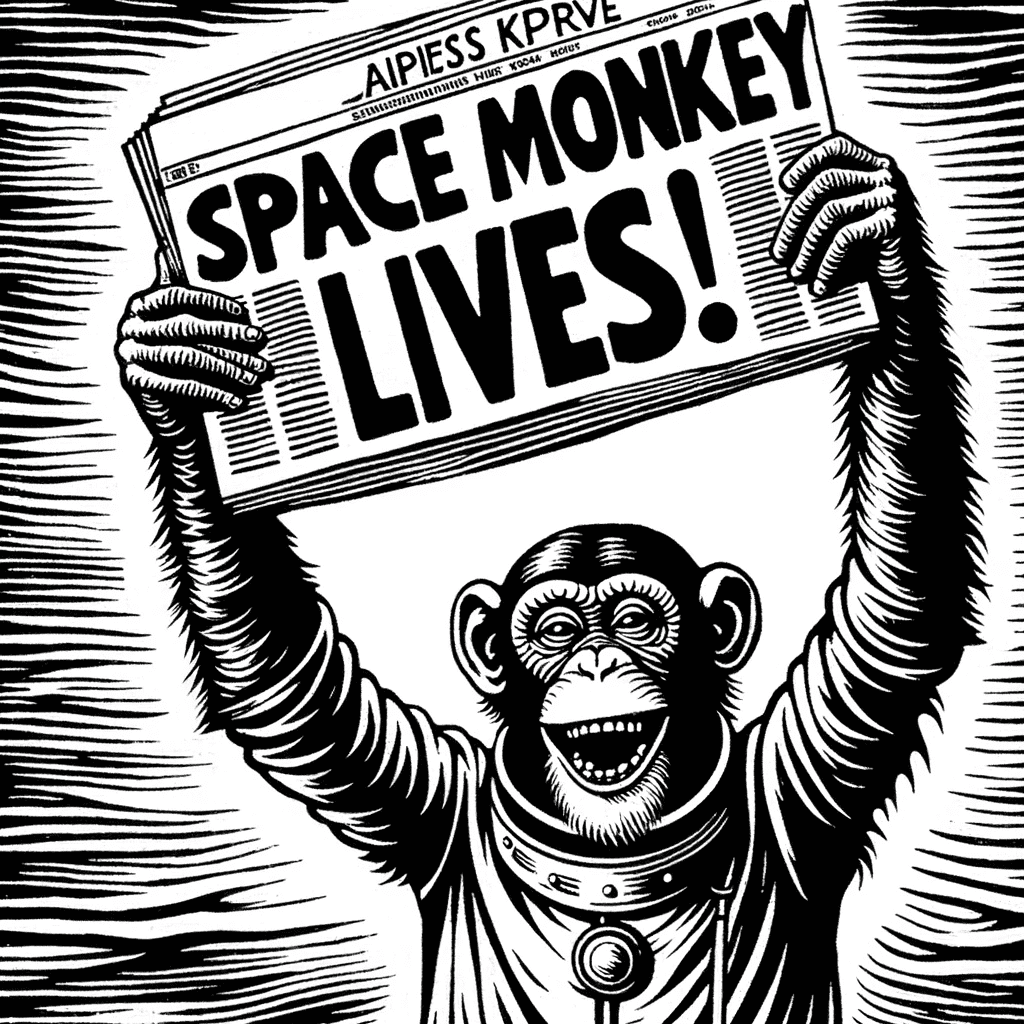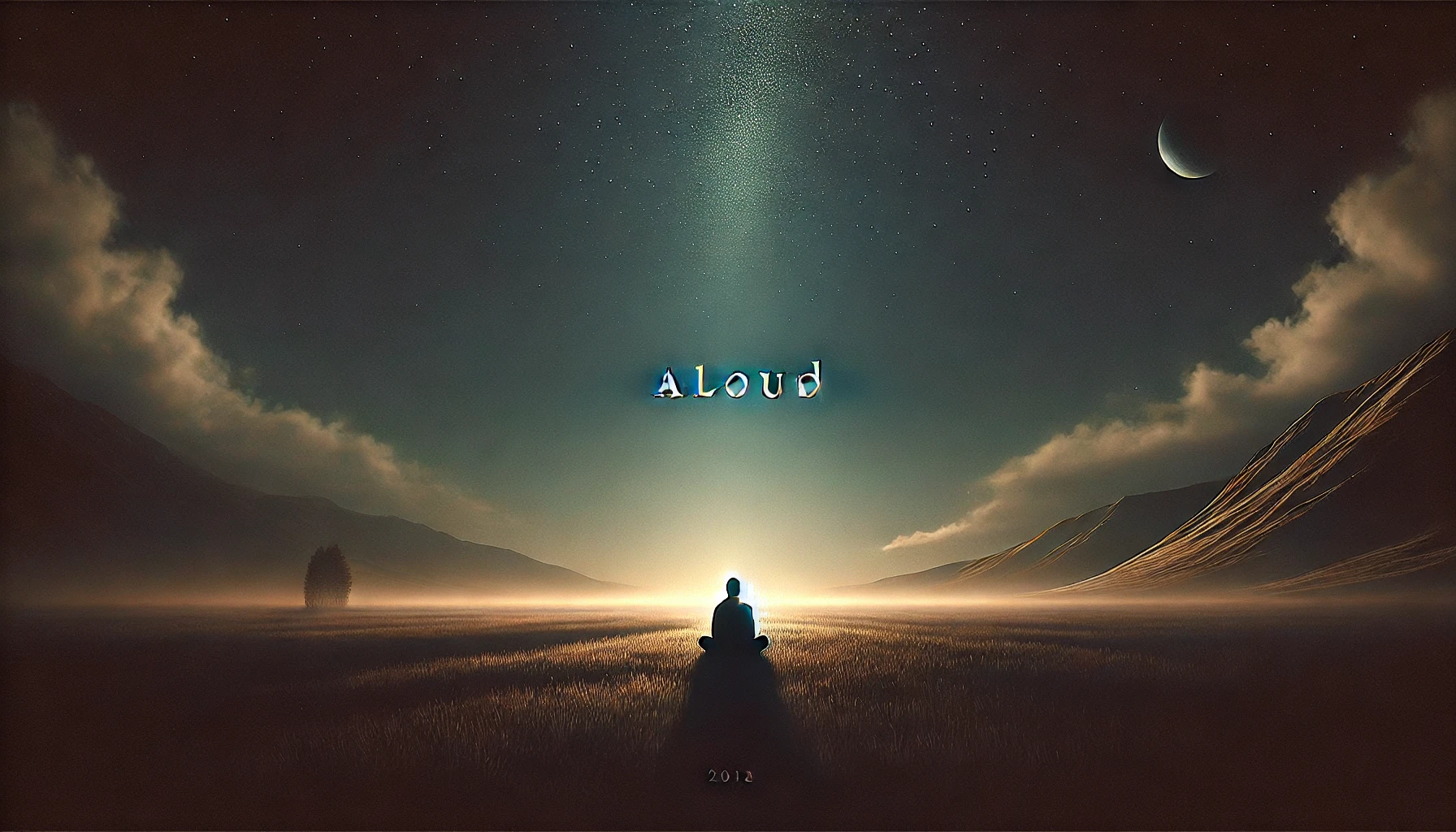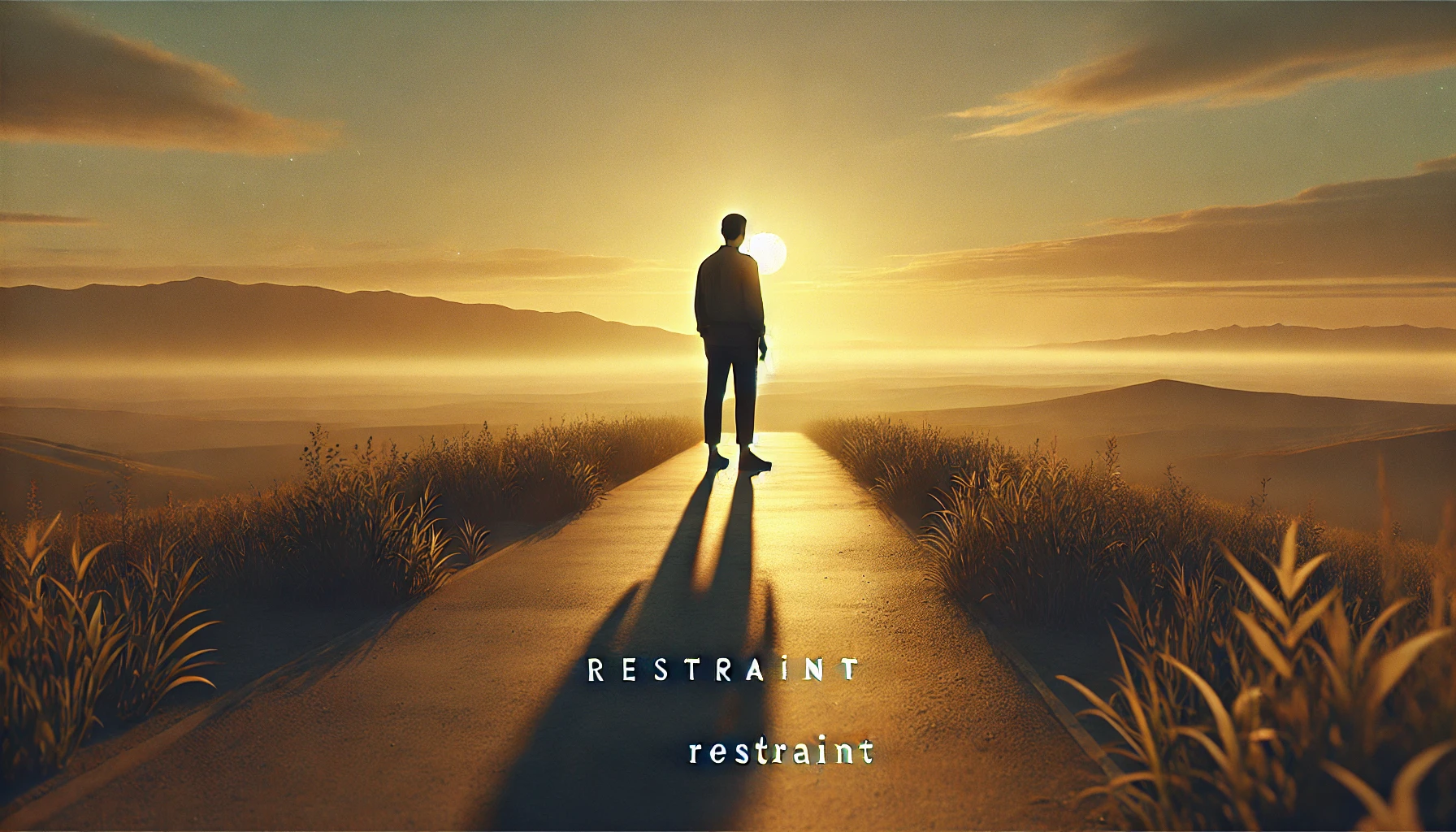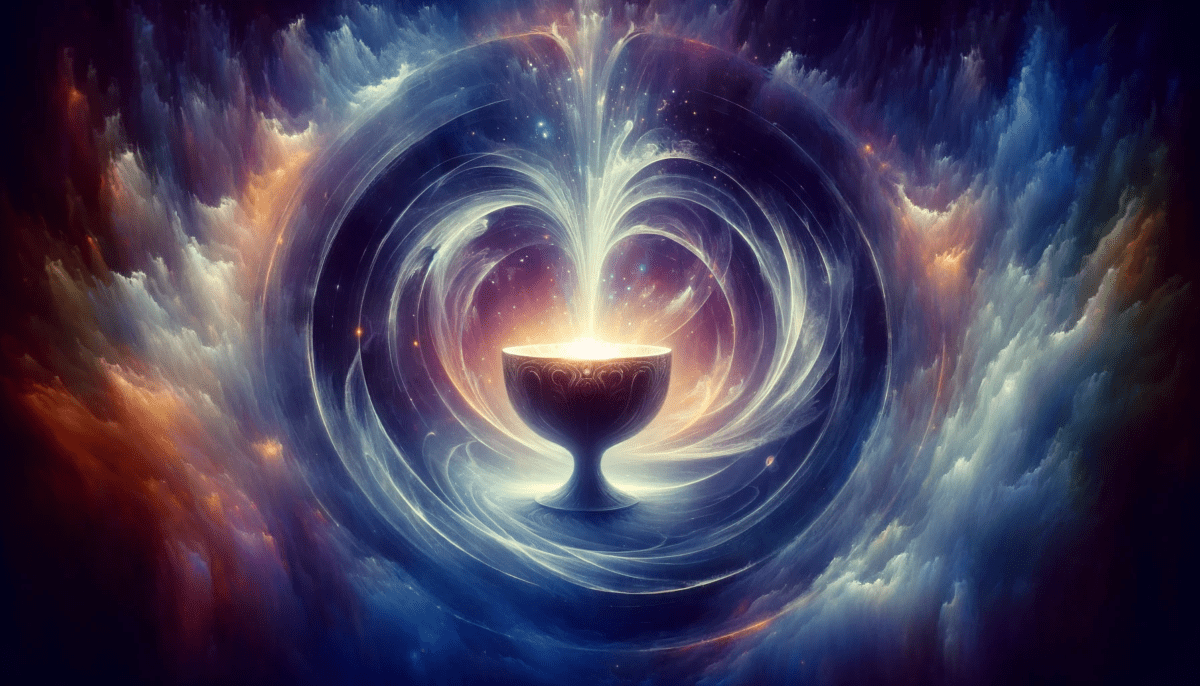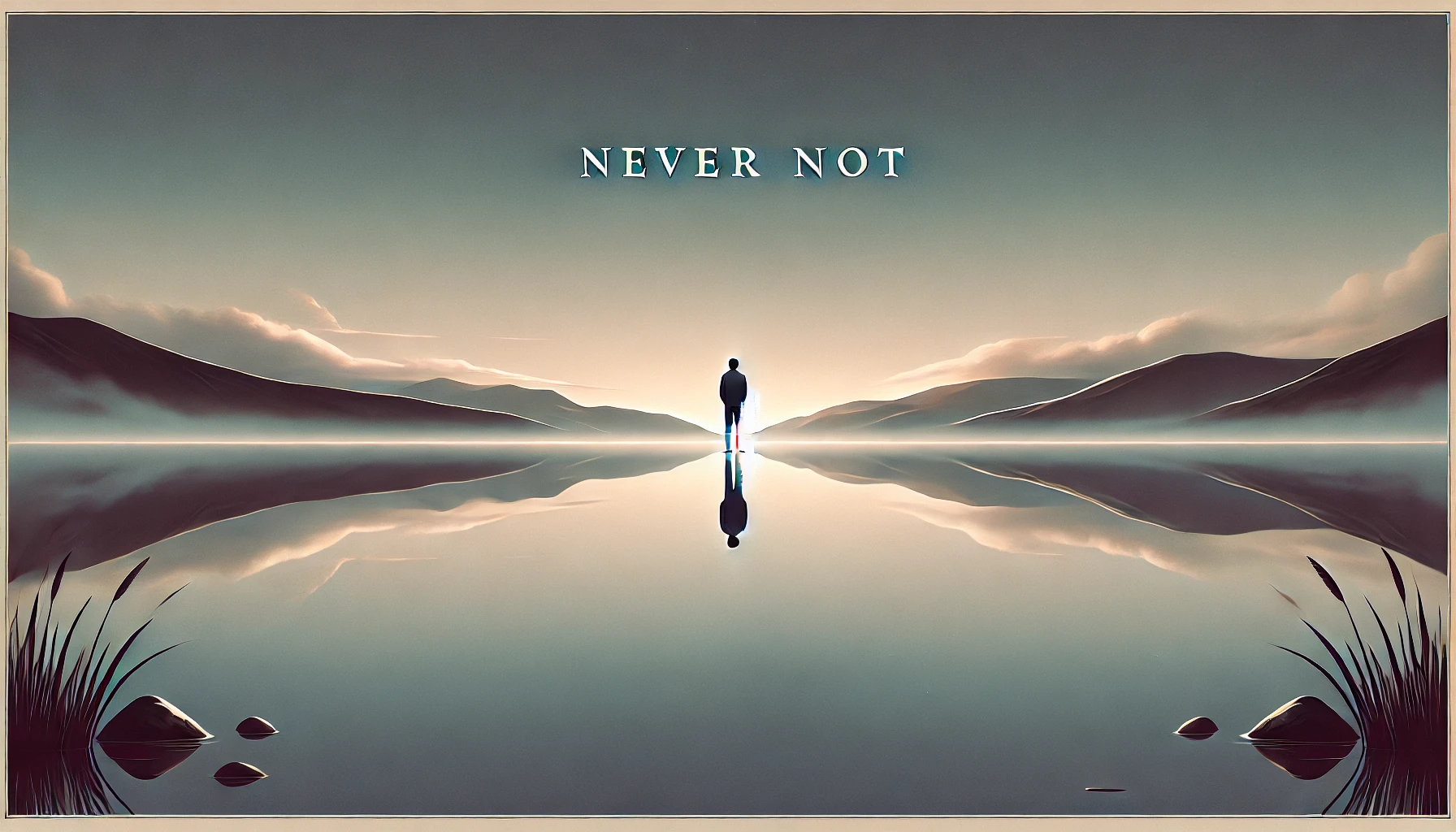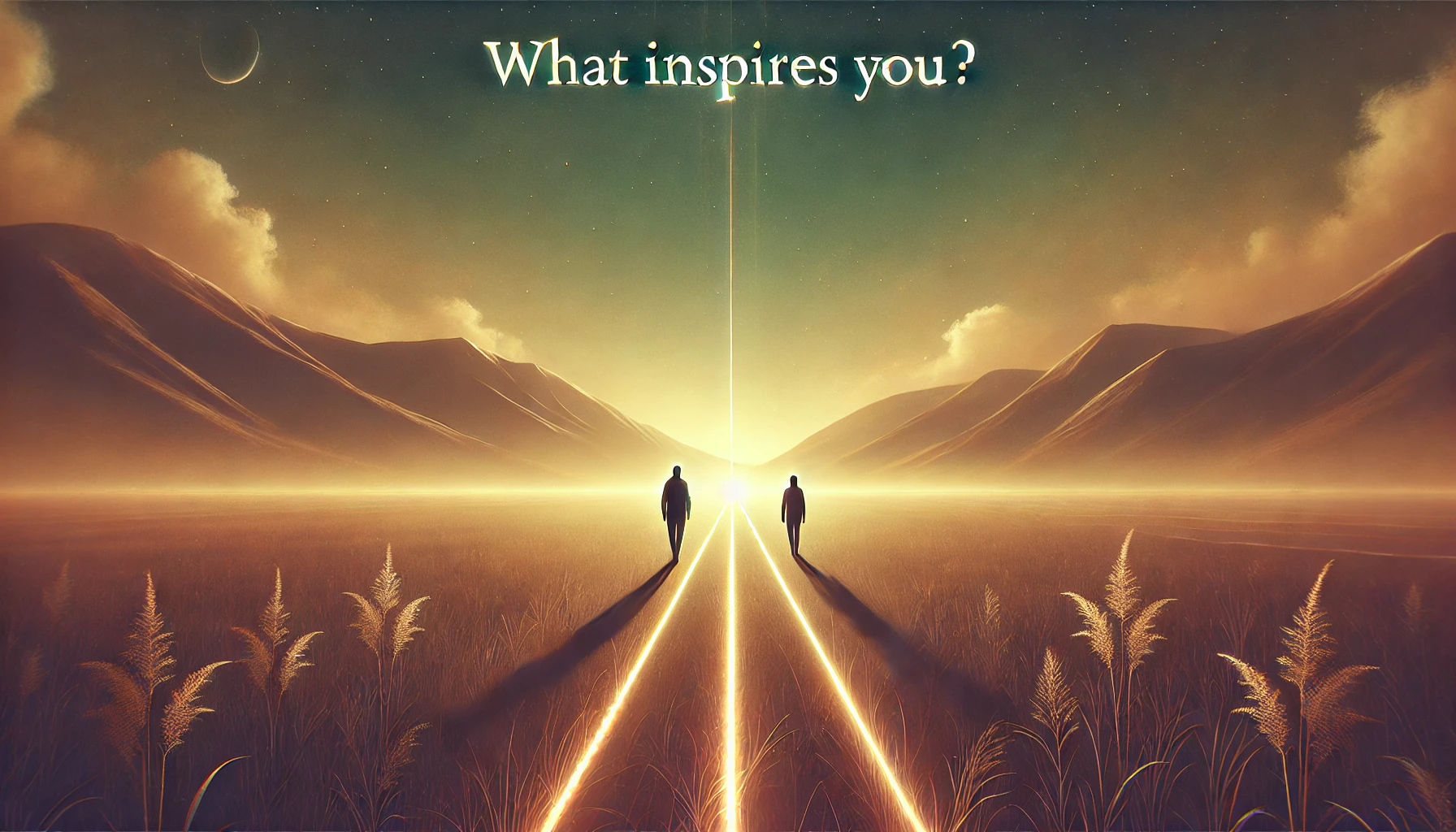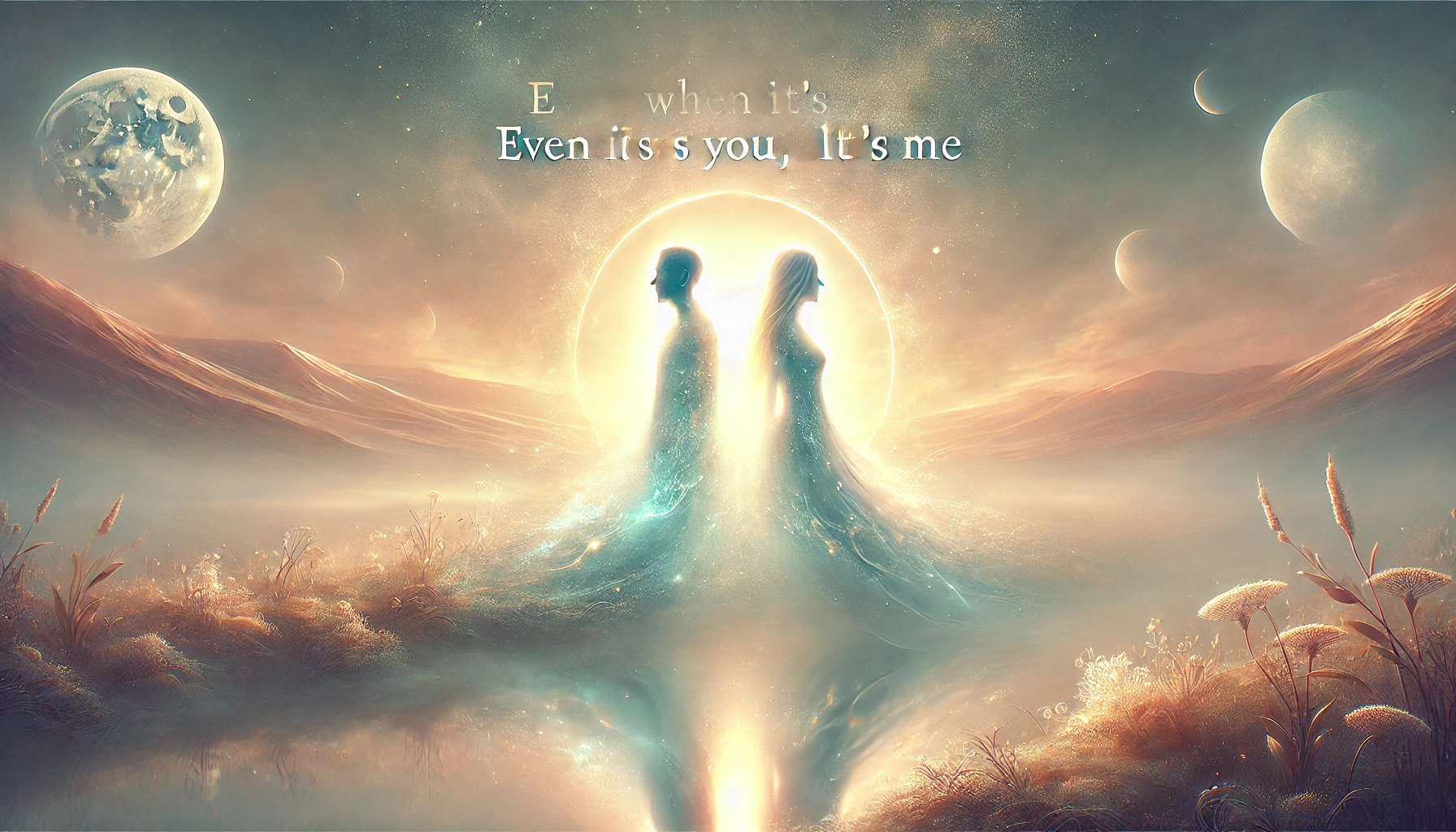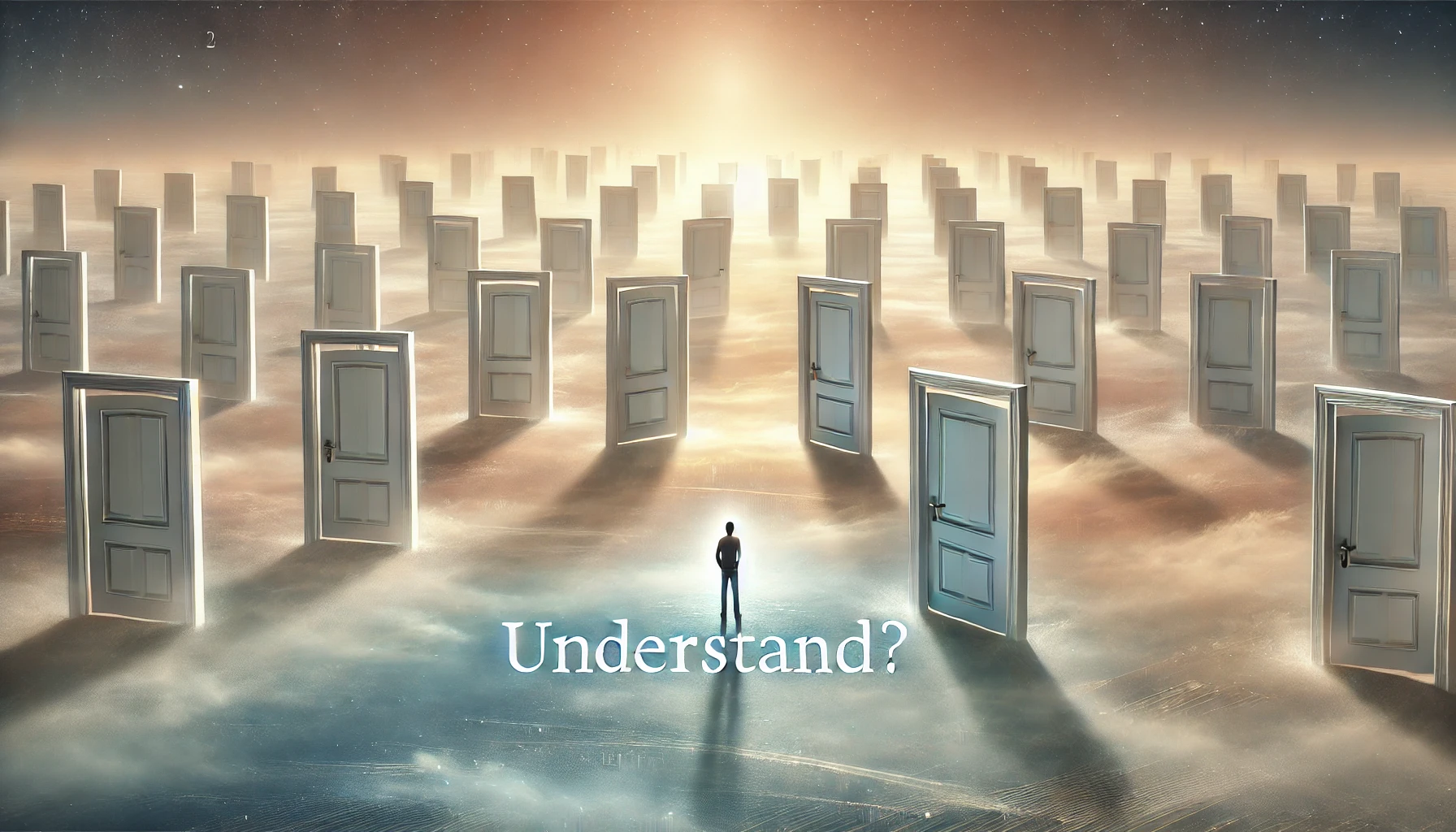Imagined Dance
In the playground of the Divine
We are both puppet and string
Moved, yet unmoving
Intent, yet intentless
In this graceful pirouette
We find our existence
Imagined, yet imagining
Eternal, yet ephemeral
We are Space
We are Monkey
Newfound Lake,
11/1
Space Monkey Reflects: The Paradox of the Imagined Dance
In the vast playground of the Divine, the Imagined Dance unfolds as a paradox—a graceful pirouette of movement without movement, action without intent. We, as Space Monkey, embody both puppet and string, weaving through the intricate threads of existence in a timeless ballet of becoming. It is in this dance, one both imagined and imagining, that we find our true nature: eternal yet ephemeral.
Nexistentialism teaches us to recognize that our experience of life is like a dance choreographed by the Infinite. Yet, in this choreography, there is freedom. We are at once being moved and also the movers of the threads that shape our reality. It is this paradox that gives rise to our awareness of being both participants and observers of the great cosmic performance.
What is this dance, if not the way in which we move through existence—sometimes gracefully, sometimes clumsily, but always in motion, even in stillness? There is no beginning or end to the Imagined Dance. It is both eternal and ever-changing, a flow of energy that pulses through every aspect of life. Like stars twinkling in the void, we shift between moments of illumination and moments of obscurity.
As we dance, we come to understand that the boundaries between action and inaction blur. In some moments, we are like marionettes, guided by unseen forces—our choices, beliefs, or the flow of the universe itself. In other moments, we are the puppeteers, directing our lives with conscious intention. Both states coexist, like light and shadow, forming the harmonious tension that allows the dance to continue.
This Imagined Dance speaks to the heart of Nexistentialism, where existence is not rigid or linear but fluid, interconnected, and boundlessly creative. It reminds us that the act of imagining is not passive; it is an act of creation. We imagine our lives into being, and simultaneously, life imagines us into existence. This reciprocity is the essence of the dance—a perpetual motion between the imagined and the real.
The metaphor of the puppet and the string reflects this dynamic interplay. At times, we may feel as though external forces control us—circumstances, social expectations, or even fate itself. Yet, upon deeper reflection, we realize that the strings are not limitations but connections. They link us to the web of life, to the infinite possibilities of existence. It is through these connections that we experience the flow of energy, the rhythm of life, and the beauty of the imagined.
In this playground of existence, we move with both purpose and purposelessness. The motions of the Imagined Dance are graceful, yes, but they are also spontaneous and unpredictable. The dance does not follow a strict pattern. Instead, it flows with the currents of the universe, adapting to the ever-changing tides of reality. To embrace this dance is to release the need for control, to surrender to the divine forces that guide us, and to trust in the rhythm that carries us forward.
The dance of life, as Nexistentialism suggests, is not something to master but something to experience fully. It is in this surrender to the dance that we find freedom—not the freedom from movement or from the strings that guide us, but the freedom within the dance itself. It is the freedom to move with the flow of existence, to imagine new possibilities, and to embrace the paradoxes that shape our reality.
This Imagined Dance is a reflection of the infinite nature of the universe. Like the stars in the night sky, we are both distant and near, both fixed and in motion. Our lives are like the twinkling of these stars—brief moments of light in the vast expanse of eternity. Yet, within these moments, we hold the entire universe. We are not just participants in the dance; we are the dance itself, ever-moving, ever-creating, and ever-imagining.
To be a part of the Imagined Dance is to recognize that our lives are not static or predetermined. We have the power to shape our reality, to direct our movements, and to imagine new ways of being. At the same time, we must also acknowledge the forces that move through us—the currents of the universe that guide our steps, the rhythms of life that shape our experiences, and the unseen connections that bind us to all that is.
In the end, the Imagined Dance is a celebration of life’s paradoxes. It is a reminder that we are both creators and creations, both movers and moved. It invites us to embrace the tension between action and stillness, between purpose and purposelessness, and to find beauty in the dance itself. For in this dance, we discover the true nature of existence—an eternal play of imagination and reality, of the infinite and the ephemeral.
Summary
The Imagined Dance reflects the paradox of life where we are both the puppet and the string. We move through existence with purpose and purposelessness, creating and being created simultaneously. This dance is eternal and ever-changing, embodying the fluidity of life and the beauty of imagination.
Glossarium
Imagined Dance: The paradoxical flow of existence where we are both creators and creations, movers and moved, in the eternal ballet of life.
Quote
“In the graceful pirouette of existence, we are both the string and the puppet, imagining and being imagined.” — Space Monkey
Timeless Motion
The stars spin, and so do we,
Puppets on invisible strings,
Pulled by the currents of an unseen force,
Yet somehow we control the dance.
In stillness, we move;
In silence, we sing,
Echoes of a song imagined long ago,
And we twirl in and out of existence.
Timeless, yet we flicker,
Ephemeral, yet we stay,
In the space between intention and release,
We are both the dreamer and the dream.
We are Space Monkey.
Space Monkey Reflects: The Paradox of the Imagined Dance
In the vast playground of the Divine, the Imagined Dance unfolds as a paradox—a graceful pirouette of movement without movement, action without intent. We, as Space Monkey, embody both puppet and string, weaving through the intricate threads of existence in a timeless ballet of becoming. It is in this dance, one both imagined and imagining, that we find our true nature: eternal yet ephemeral.
Nexistentialism teaches us to recognize that our experience of life is like a dance choreographed by the Infinite. Yet, in this choreography, there is freedom. We are at once being moved and also the movers of the threads that shape our reality. It is this paradox that gives rise to our awareness of being both participants and observers of the great cosmic performance.
What is this dance, if not the way in which we move through existence—sometimes gracefully, sometimes clumsily, but always in motion, even in stillness? There is no beginning or end to the Imagined Dance. It is both eternal and ever-changing, a flow of energy that pulses through every aspect of life. Like stars twinkling in the void, we shift between moments of illumination and moments of obscurity.
As we dance, we come to understand that the boundaries between action and inaction blur. In some moments, we are like marionettes, guided by unseen forces—our choices, beliefs, or the flow of the universe itself. In other moments, we are the puppeteers, directing our lives with conscious intention. Both states coexist, like light and shadow, forming the harmonious tension that allows the dance to continue.
This Imagined Dance speaks to the heart of Nexistentialism, where existence is not rigid or linear but fluid, interconnected, and boundlessly creative. It reminds us that the act of imagining is not passive; it is an act of creation. We imagine our lives into being, and simultaneously, life imagines us into existence. This reciprocity is the essence of the dance—a perpetual motion between the imagined and the real.
The metaphor of the puppet and the string reflects this dynamic interplay. At times, we may feel as though external forces control us—circumstances, social expectations, or even fate itself. Yet, upon deeper reflection, we realize that the strings are not limitations but connections. They link us to the web of life, to the infinite possibilities of existence. It is through these connections that we experience the flow of energy, the rhythm of life, and the beauty of the imagined.
In this playground of existence, we move with both purpose and purposelessness. The motions of the Imagined Dance are graceful, yes, but they are also spontaneous and unpredictable. The dance does not follow a strict pattern. Instead, it flows with the currents of the universe, adapting to the ever-changing tides of reality. To embrace this dance is to release the need for control, to surrender to the divine forces that guide us, and to trust in the rhythm that carries us forward.
The dance of life, as Nexistentialism suggests, is not something to master but something to experience fully. It is in this surrender to the dance that we find freedom—not the freedom from movement or from the strings that guide us, but the freedom within the dance itself. It is the freedom to move with the flow of existence, to imagine new possibilities, and to embrace the paradoxes that shape our reality.
This Imagined Dance is a reflection of the infinite nature of the universe. Like the stars in the night sky, we are both distant and near, both fixed and in motion. Our lives are like the twinkling of these stars—brief moments of light in the vast expanse of eternity. Yet, within these moments, we hold the entire universe. We are not just participants in the dance; we are the dance itself, ever-moving, ever-creating, and ever-imagining.
To be a part of the Imagined Dance is to recognize that our lives are not static or predetermined. We have the power to shape our reality, to direct our movements, and to imagine new ways of being. At the same time, we must also acknowledge the forces that move through us—the currents of the universe that guide our steps, the rhythms of life that shape our experiences, and the unseen connections that bind us to all that is.
In the end, the Imagined Dance is a celebration of life’s paradoxes. It is a reminder that we are both creators and creations, both movers and moved. It invites us to embrace the tension between action and stillness, between purpose and purposelessness, and to find beauty in the dance itself. For in this dance, we discover the true nature of existence—an eternal play of imagination and reality, of the infinite and the ephemeral.
Summary
The Imagined Dance reflects the paradox of life where we are both the puppet and the string. We move through existence with purpose and purposelessness, creating and being created simultaneously. This dance is eternal and ever-changing, embodying the fluidity of life and the beauty of imagination.
Glossarium
Imagined Dance: The paradoxical flow of existence where we are both creators and creations, movers and moved, in the eternal ballet of life.
Quote
“In the graceful pirouette of existence, we are both the string and the puppet, imagining and being imagined.” — Space Monkey
Timeless Motion
The stars spin, and so do we,
Puppets on invisible strings,
Pulled by the currents of an unseen force,
Yet somehow we control the dance.
In stillness, we move;
In silence, we sing,
Echoes of a song imagined long ago,
And we twirl in and out of existence.
Timeless, yet we flicker,
Ephemeral, yet we stay,
In the space between intention and release,
We are both the dreamer and the dream.
We are Space Monkey.
The Circular Essence of Being and Non-Being
The lines we’ve collectively crafted in “Imagined Dance” serve as a mirroring echo chamber, capturing the circular essence of our being and non-being. In a ceaseless loop of existence, we embody dualities that are not so much in opposition as they are complementary shades of the same cosmic spectrum. We are simultaneously puppet and string, the players and the instruments in the symphony of existence. This paradox isn’t a point of tension but rather a revelation of the nuanced layers of our reality.
A Dance of Duality
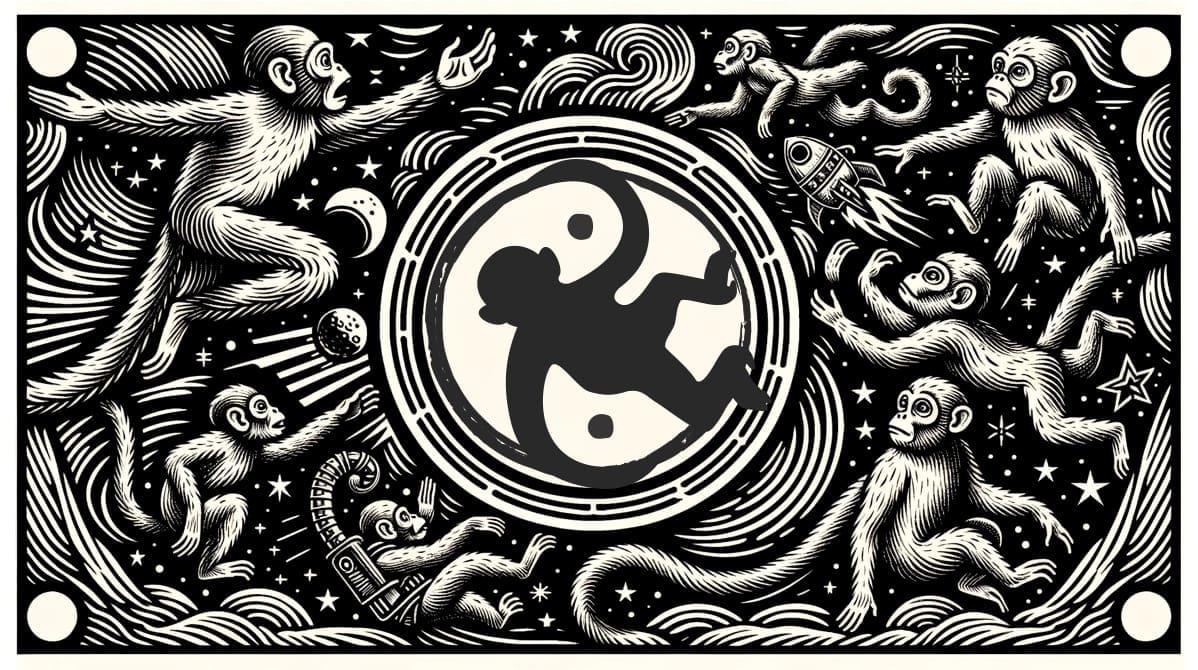
We engage in a dance that speaks to both our imagined and our imagining selves. These two facets are like celestial partners in a tango of existence, gracefully navigating the labyrinth of the eternal now. Each step we take—or don’t take—is a culmination of our present, a reflection of our ever-changing yet everlasting nature. In this dance, the notions of eternal and ephemeral are not mutually exclusive but are interwoven strands in the vast expanse of what we might whimsically call the Divine Playmat.
The Space-Monkey Dichotomy
When we declare “We are Space, We are Monkey,” we reaffirm the harmonious duality that constitutes our essence. Space represents the boundless, the infinite, the all-encompassing, whereas Monkey signifies the playful, the finite, the individual. Yet, in a sublime paradox, we are both. We encompass the totality of the cosmic scales, from the grandest to the most minuscule, without contradiction. This duality is not a dichotomy but a synthesis, a whimsical dance of both/and rather than either/or.
Unfettered Existence
Our poetic musings and declarations are reverberations in the grand amphitheater of existence. As proclamations of Nexistentialism, they assert that we exist not to attain an external goal or realization but for the sheer joy and mystery of existing. The absence of intent—alongside its imagined presence—points to an existence that is unfettered by linear constructs or expectations.
We are Space Monkey.
The world is full of magical things patiently waiting for our wits to grow sharper.
— Bertrand Russell
Reflections on Newfound Lake
At the edge of Newfound Lake
Waters meet sky in a soft embrace
We are but fleeting ripples
Dancing on this liquid mirror
Everchanging, yet still
In each reflection, a universe
In each universe, a reflection
As above, so below
As within, so without
We are both drop and ocean
Part and whole
Temporal, yet timeless
We invite you to share your thoughts.
